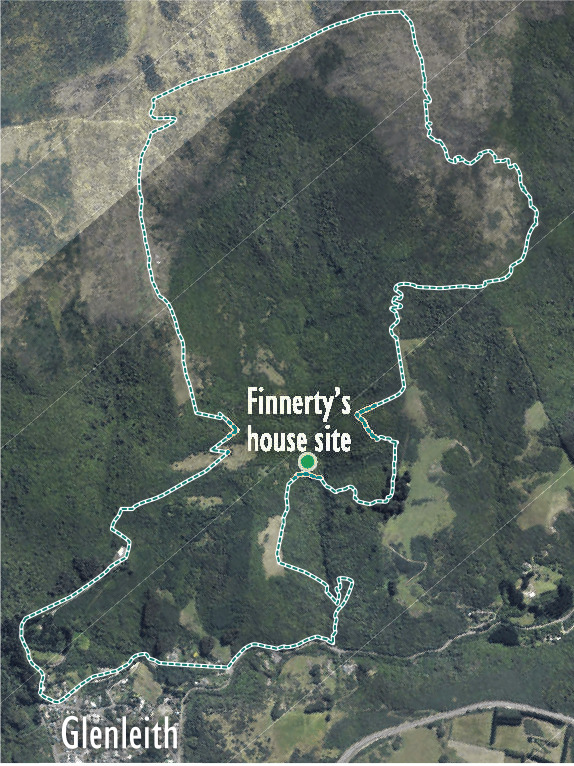

These days you can get the Ross Creek bus to the end of its route and walk to the track’s start on Leith Valley Rd. Choose the track on the town-most side of the bridge. The other one is for mountain biking.

It’s only five minutes to the glow worms and their home is a destination in itself, even in the daytime when the hosts are asleep. A cool, dark cavern has tall walls of ferns drooping down like a vertical garden, although that anthropocentric view reveals a humanoid arrogance — nature got there first on this horticultural craze. Here’s the original in its pure glory.

Turning back, it’s a rough 30 minutes to veer off and reach Nicols Falls, named after an early absentee landowner. By the time of the 1889-90 NZ and South Seas Exhibition in Andersons Bay Rd, the falls were said to be the greatest scenic attraction in Dunedin. Groups of up to 20 tourists were taken to the start of the track in horse-drawn carts.

He built good quality tracks and set up a toll gate administered by their children, charging visitors sixpence to see the waterfall. A neighbouring household offered refreshment rooms, reached first by visitors, and started talking about charging their own toll. Next thing, in July 1898 the refreshment rooms were burned down. It went to court.

The site of the Finnertys’ house can still be seen, a steep 10 minutes beyond the waterfall, cut into the bank. Dunedin woman Anna Wilson is their great-great granddaughter and recently visited for the first time. There’s a flat bit dug out of the hill, a few bricks and one or two introduced plants among a whole lot of regrown native bush. It’s a small site and hard to imagine a family of about 18 fitting but they’d probably find it hard to imagine us needing the sizes of houses built today.
After the house site, you reach eucalypts marking the boundary of the Finnertys’ land. Follow the fainter track ahead. Given the clarity of a perpendicular track enticing you in what feels like the proper direction, this is counter intuitive but the alternative is a long, winding mountain biking track. Go straight. Some kind soul has tied walking markers to trees but if in doubt, the fenceline gets you there eventually.
A picnic table sits looking over the city. Then a most bodacious new gravelled track sneaks slowly around a knoll through secretive forest with surprise mature trees. Maps show the old Moon Track heading straight uphill but it’s so deeply eroded it’s barely navigable. This new winding wonderway is far better. Beyond its bush line is open flaxy scrub with big rocks for basking on and gazing beyond. Distant tree species reveal their preferences, clumping themselves into patches inhabiting their own distinct zones as clearly as a school biology text book.

Reach the foothill between Swampy Summit and Flagstaff then loop left down the Pineapple Track to the start.
It’s almost nuts that there’s a tourist attraction to this degree at the edge of suburbia. It’s easy to assume that "overseas" must be better. The internal combustion engine and jet-powered air travel has opened up untold exotica but all this time a gem’s been just up the road.












